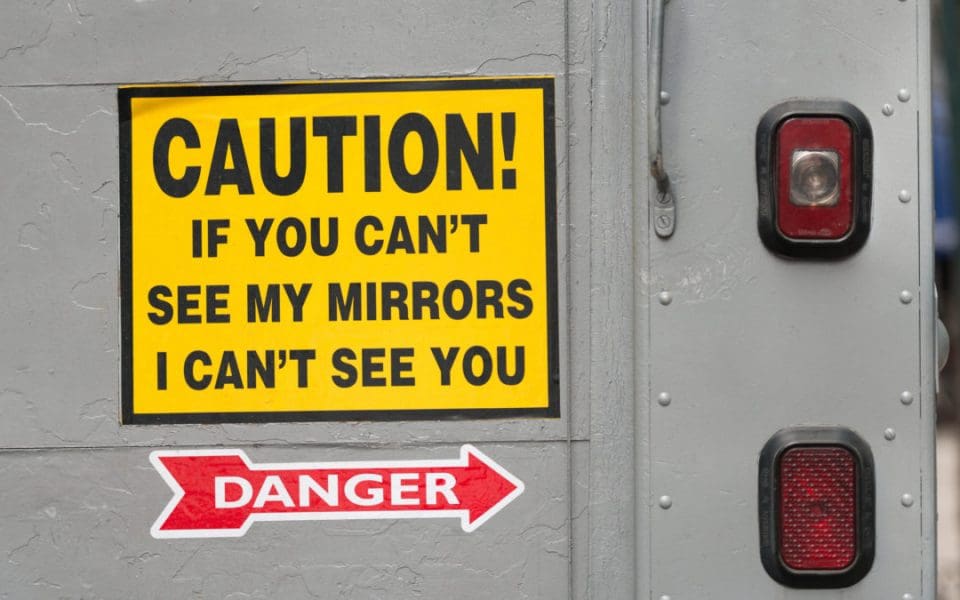
Don’t be a Semi-Truck | Addressing Blind Spots in Leadership
By Tyler Head
We can learn quite a bit about leadership from driving on the highway, specifically when it comes to developing the ability to lead people better.
Typically, semi-trucks have stickers on the back of their 72-foot extended trailer that warn others of their potential blind spots. These stickers are there for the education of fellow drivers and the safety and awareness of all parties. In essence, they are indicators. These stickers indicate how to approach the truck, where or where not to be when it turns, and how to best move through the normal traffic flow when traveling near a semi-truck. When we think about this from the perspective of being a fellow driver on the road with semi-trucks, we are most likely grateful. It’s easy to drive alongside another driver who wants to keep us safe and increase our knowledge of how to “approach or be around” their vehicle when moving in the same direction.
Now, for a moment, imagine a semi-truck and car traveling down the interstate. However, this semi-truck failed to include any blind spot indicators on its exterior. The surrounding vehicles are unaware of the dangers that semi-trailers can bring to the roadways. We have a recipe for disaster on both fronts, with the semi-trailer not knowing about the new driver and vice versa. The potential for harm, danger, and complete chaos for both parties is easily visible here.
Picture a leader, unaware of their blind spots, and a recent hire who is moldable, hungry to learn, grow and work hard on a vision and shared purpose.
We as leaders don’t come with those types of stickers, and nor should we. When leading an organization of people toward a common goal, it is our responsibility to become aware of our blind spots and make changes to offset or grow out of them. How we approach our team as our awareness raises regarding our blindspots is of the utmost importance. When your shortcomings are called out, defensive reactions can result in division, internal animosity, feeble attempts at growth, and ultimately a loss of trust. However, when we as leaders approach our leadership deficiencies with open hands and humility, we empower others to do the same.
Let’s not be unmarked semi-trucks. Don’t subtly leave “beware” signs around your organization by not seeking to learn about and address your shortcomings. When or if anyone from our team approaches us and asks us to manage our blind spots, how we respond matters.
We could even learn to go a step further and offer an open invitation for your team to provide their perspective of your “blind spots” and their effects. Then, practice receiving with open hands and ears to understand what your people are saying. It’d be easy to believe that exposing ourselves in this way may lessen our influence, but quite the opposite will occur. The whole organization will be better because of it.
If you are leading people, your blind spots are directly affecting those around you. It’s frequently said, “you don’t know what you don’t know,” but when you do know, as a leader, it’s now up to you to address it.
Let’s be the type of leaders that develop healthy and high-performance cultures by being the ones to take the first step.
At DRYVE Leadership Group, we walk alongside you, to help you confidently take that first step to cultivate a culture like this within your organization. We’d love to brainstorm with you!
Book a Strategy Session with one of our coaches now!
Presence is a Superpower
What if the most powerful thing you bring to the table isn’t your strategy, your vision, or...
Lead From the Seat You’re In
The invitation was clear. The vision, compelling. The role, ours to take—until it wasn’t. We sat across...
Turning the Light On
She stood in awe, eyes wide, whispering Wow. Then she pulled a string—and the light disappeared. The...










